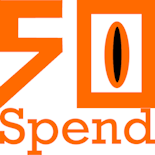
For all of the issues that Apple’s iPad does proper—high-def films on the go, video games, more and more widespread coffee-shop payment terminal—it hardly ever will get its due as a robust music device.
Whether you’ve gotten an infectious beat in your head you need to flip right into a ringtone, you need to study a bit of music idea, otherwise you’re a severe musician with studio ambitions, the pill is surprisingly succesful. It combines {hardware} energy and helpful apps that may help in recording, modifying, and exporting your music.
The Basics: What You’ll Need
To get began, you will want an iPad, in fact. Any iPad you purchase immediately or that was bought throughout the previous few years ought to be greater than able to bringing your musical goals to actuality. After all, Madlib created all of the beats for his collab with Freddie Gibbs, Bandana, on an iPad a few years ago, and Gorillaz frontman Damon Albarn famously made an album on an iPad way back in 2010. The {hardware} has gotten significantly higher since then.
The most essential factor to know in case you’re going to plug in any mixers, devices, or different {hardware} is whether or not your iPad has a Lightning connector or a USB-C connector, sometimes found on some newer iPad Pro, iPad Air, and iPad Mini models.
You should purchase Apple’s Lightning-to-USB 3 Camera Kit or an AV Multiport Adapter to plug in most USB devices or mixers and add a MIDI-to-USB cable, and even put money into a wireless adapter that uses Bluetooth. A more direct cable solution could also be obtainable, however some devices might require an extra energy supply than what the iPad can present.
It’s definitely attainable to document ambient audio or vocals with the iPad’s built-in microphone and to create loops and music with none exterior {hardware}, but it surely’s good to have the choice to add microphones, keyboards, and different instruments.
Next you will want some software program to flip the iPad right into a digital audio workstation. DAWs have been round a very long time, and the time period covers something from a studio mixer setup to Apple’s free GarageBand app. If GarageBand is not preinstalled on your iPad, try to be ready to obtain it on the App Store.
While it is obtained a little bit of a studying curve, GarageBand has heaps of loops (put in and downloadable,) instrument instruments, and modifying choices, greater than you might ever want. Hokusai Music Editor, AudioKit, and Spire are just a few extra audio modifying apps which can be both free or free to use with in-app purchases.
Make Your Music
Next you will need to get snug with the concept of making a number of tracks of sound and mixing these tracks collectively.
GarageBand and different DAWs work on what’s known as a timeline, sometimes a horizontal set of tracks stacked on prime of each other that show sound ranges and supply modifying choices akin to fade-ins/fade-outs, results, and the power to repeat a piece of a monitor as a loop.






